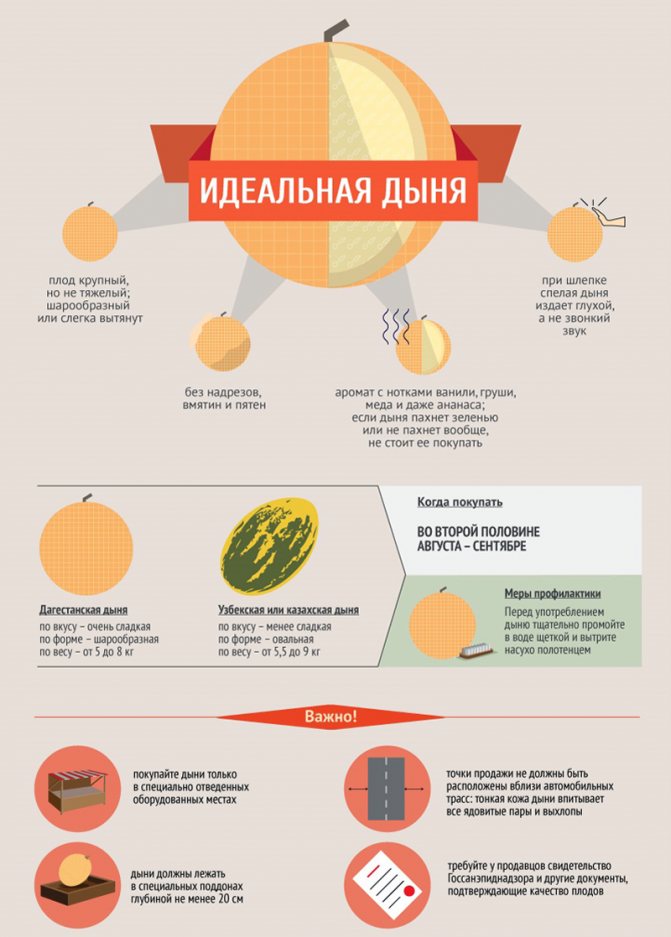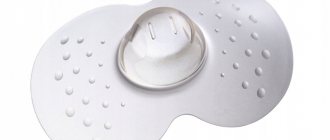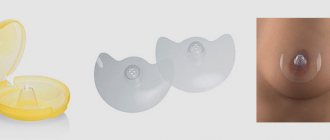Print and online publications are full of dozens of possible positions from which you can breastfeed your baby. In some positions, the baby almost hangs upside down on the mother. And definitely, just absolutely – the authors assure – you must try all the positions to find the right one.
For a young mother, this number of options simply makes her head spin and gives the impression that feeding a child with milk is a complex science, which not everyone can master.
As a mother of two children, I can tell you with authority that you don’t need to know all these super positions, and even more so, you don’t have to try them. Don't waste time, don't bother yourself. Feed immediately in the simplest, most convenient and comfortable position. We'll talk about it today.
Child
The peculiarity is that because The baby is on the mother, his arms and legs do not interfere with feeding . Often mothers complain that in normal positions the child interferes with himself during feeding (“waving his arms”, “hitting his legs”), and he has to be swaddled; and the head turns left and right, as if saying “No.” In addition, the child has to be held, which often tires the mother. In the position of relaxed feeding, the forces of gravity themselves help the baby, and those reflexes that interfered in other positions provide assistance. For example, the child does not kick his legs and arms and does not interfere with himself, but either crawls to the breast or calmly sucks; turning left and right turns into up and down movements of the head to better capture the chest. Often the baby grasps the breast deeper, the tongue moves better and protrudes further than in other positions. This means that the milk will flow better and the mother will be in less pain. Perhaps, from the outside, the latch will look like “not quite right,” but if the mother is not in pain and the milk is flowing well, perhaps there is no need to change anything? Sometimes, for better reflexes to work, it is necessary to at least partially undress the child (for example, remove “scratches” from the arms). Apparently, this position contributes to the correct use of all those reflexes of the newborn, which in another position could interfere.
Basic lying positions
The most common version of the “lying” position is when both participants in the feeding process lie on their sides, facing each other. This position is convenient for feeding at night and during daytime naps (a young mother will only benefit from naps during the day).
For very young babies, if they just lie on the mattress, it can be difficult to reach the nipple, so they are placed on a pillow. If the pillow is high, then in this position it may be more convenient to give the upper breast, that is, the right one, if the mother is lying on her left side.

One of the variants of the position described above is the position when the baby is laid so that his head is on the mother’s hand (on the right when lying on the right side). The second hand is free, with which the mother gives the baby the breast and gently hugs the baby. To make a woman more comfortable, you need to place a pillow only under your head, while your shoulders should be on the mattress.
Mother
The mother does not have to strain to hold the baby or lean towards him. At the same time, the mother, since she lies comfortably and her whole body, every part of it, receives support, easily becomes completely relaxed (and such relaxation and such a position contribute to the release of more prolactin and oxytocin, which means that there will be more milk and it will flow will be faster ). The same position and interaction between mother and baby provokes the mother’s innate reactions , when mothers begin to hug the child in a very similar way, helping him - it turns out that we, like our children, have “built-in” behavior of care and love in us, which awakens especially well in this position.
The best position for breastfeeding.
Everything ingenious is simple, and this is exactly the case. Many girls are forced to become familiar with feeding while lying on their side already in the maternity hospital. These are those who had stitches or a caesarean section during childbirth.

In this case, the doctor warns that you cannot sit for 10-14 days and recommends feeding while lying down. Such mothers start, and never again, unless absolutely necessary, try other body positions.
The rest, who were lucky enough to give birth without incident, and who can sit, as a rule, feed their babies while sitting. I know a lot of stories when such mothers tried lying down feeding only at the end of breastfeeding, and were very upset when they realized how easy and simple everything could be done.
Procedure to feed a baby in a side-lying position:
- Wash your hands with soap. And always do this when handling any baby. If it is not possible to wash, wipe with a damp cloth.
- Place a clean diaper on the bed, sofa or other surface. Firstly, because the baby will touch this surface with his cheek, and secondly, milk may leak a little.
- Place the toddler on the diaper.
- Lie down next to him, leaning on the elbow near which is the breast with which you will feed the baby. That is, if you want to give the right breast, lean on your right elbow. If left - to the left.
- Squeeze the nipple, making it as flat as possible for proper latching, and present it to your baby.
- The reflex will work one hundred percent and the baby will start eating.

Rules for a comfortable position for feeding
In order for mother and baby to be comfortable during feeding, the following factors must be taken into account:
- In any position, the baby's body should be in the same plane. It is important to ensure that the head, chest, stomach and legs are facing the same direction. Otherwise, the newborn may experience muscle tension, which leads to difficulty swallowing;
- The head should not be allowed to be excessively thrown back or tilted forward. The mother should properly support the baby's head with her hand. However, you should not press it too hard, because many children may not like it;
- It is necessary to ensure that the baby's mouth is always at the level of the nipple. You also need to ensure that the baby can breathe freely while eating;
- It is important to remember that you need to put the baby to your breast, and not lean towards him;
- During feeding, the mother needs to make herself as comfortable as possible. You need to sit straight, without leaning to one side. It is recommended to rest your back on a vertical surface. Pillows, rolled blankets or large towels should be used. They need to be placed under the lower back, back or arms to avoid painful sensations during long-term feeding;
- When using the feeding position while lying on your side, it is advisable to place a special cushion under your back and hold a thick sofa cushion between your legs.
Watch my video tutorial on proper breastfeeding:
Poor positioning of a woman or baby when eating can lead to various problems, such as:
- the appearance of cracks in the nipples;
- child swallowing air;
- the occurrence of stagnation in the mammary glands.
In an uncomfortable position, it will be difficult for the baby to suck out milk, so he may get tired before he has time to eat and remain hungry.
There is no one correct position for feeding a newborn suitable for constant use. It is recommended to change the child's position throughout the day. This has an important practical meaning, since this ensures the emptying of all segments of the breast and prevents the occurrence of milk stagnation.
Rules for attaching a baby to the breast
It is worth remembering the basic provisions (recommended by the World Health Organization, the non-profit breastfeeding support organization La Leche League) that allow the mother to preserve milk and feed the baby.
- The child's body and head are a straight line; prevent the head from tilting back and pressing against the body. He himself is turned towards the mother's body, as if lying on his side. The mother's hand completely envelops the child's head and body.
- The newborn's mouth is wide open to allow for proper latching. If the mouth is closed, just touch the lower lip, the reflex will work, then the baby will open it.
- The baby should grab the areola along with the nipple. The nose is pressed against mother's breast. There should be no slurping or smacking sounds. The baby can snore. Prevent it from sliding off your chest. It contributes to the appearance of cracked nipples.
- The woman does not experience pain. The position must be comfortable. The task is not to reach for the child, but to pull him to the chest.
The location, as convenient and correct as you like, without these conditions is unlikely to be able to establish lactation.
Pose 3 – anti-crisis: from under the arm
The mother sits upright, the child is under her armpit on the side at chest level with the head towards her knees. To support the baby, you can use a pregnancy pillow, or two stacked regular head pillows for adults. A rolled-up quilt will also work. This sitting position is more comfortable than the “cradle” position, since you do not have to bear the weight of the baby on yourself, and one hand is always free. But the downside is that you won’t be able to sit on a chair—you need a chair with wide armrests, and if you don’t have one, you’ll have to sit on the bed without back support. However, in this case, the inconveniences can be neglected, since the under-arm position, also known as the armpit position, or “grabbing the ball” (the child is held like an American football ball) is a magic couple-lifesaver in many problematic situations that arise during lactation .
- Incorrect grip. The armpit position gives the most complete grip control. The mother clearly sees exactly how the baby takes the breast and can correct any mistakes.
- "Lazy sucker." If the baby has difficulty sucking milk and is not gaining weight well, the mother can help him by squeezing the breast during feeding. To do this, she needs the free hand that this position provides (without overloading the other, like a “cross cradle”). Some babies quickly fall asleep without eating properly. In this case, it is convenient to use your free hand to disturb the sleepyhead and move the nipple in his mouth.
- Cracked nipples, painful attachment. If the mother developed cracks when she fed in the “cradle” or lying down, this position will allow the nipple to be positioned differently in the baby’s mouth. This reduces pain and prevents re-injury. If there are no cracks, but it still hurts during application, this is a signal of errors in grip, and they need to be corrected.
- Lactostasis. The choice of position for feeding during lactostasis depends on which particular milk lobe has stagnation. And it forms where milk is sucked out worst. The baby absorbs best the lobes towards which his chin is turned. The worst thing, accordingly, is the opposite. The most popular positions are those in which the baby's chin is directed towards the mother's belly, so the upper lobes of the breast are the worst to dissolve. This is where women most often experience stagnation. Using the underarm pose allows you to turn your head in the other direction. It is useful to feed in this position regularly - for prevention. The more varied poses are used, the less likely it is to stagnate. And if it has already arisen, then it is necessary to feed in the position that was previously ignored.
— Subtype of pose 3(a) — lying jack
The mother lies on her side, the child next to her with her feet towards her head. This position allows you to get all the benefits of the catch position, but still allows you to lie down. The downside is that the mother has to lie in the middle of the bed so that there is room for the baby's legs, and there is nothing to rest the pillow on. You have to use your hand instead of a pillow, but it quickly becomes numb.
— Subtype of pose 3(b) — hanging
The baby lies on his back, the mother gives him the breast from above, hanging down, and with her hand holding him in a position slightly to the side so that he can drink comfortably. Thanks to this unusual position, the baby can easily suck all the lobes. The force of gravity helps him. The mother can deliver the breast while standing on all fours over the baby: with her head to his feet, head to his head or across him - depending on which lobes need to be sucked. In this position, the body begins to hurt after a few minutes, but in a difficult situation it is worth it. You can ensure relative comfort by placing the child on the table and hanging over him, resting his hands on a hard surface.
Advantages.
- In the pose described, you are as relaxed as possible. Your arms and legs don't get tired. You are not in a hurry to interrupt the feeding process because your arm or leg is numb (a common occurrence when feeding while sitting).
- The baby is relaxed. He lies on his own in a way that suits him. There is no pressure on the back of the head, and the chin does not tend to rest against the chest (as when the mother supports it with her hand in a sitting position). The baby is in no hurry to interrupt the process because he is uncomfortable, and will remain full after feeding.

- Children often fall asleep while eating. It is very easy for you, without shifting or disturbing the already sleeping baby, to get up, cover him with pillows so that he does not fall, and go about his business. Of course, nearby, so as not to leave the baby unattended.
- Is it possible to think of a better position for night feeding, when you can feed the baby lying down, even practically without waking up, half asleep?
Does the baby have enough milk?
It is necessary to remember that all children are individual, so the mother should answer the question of how to determine that the child is getting enough breast milk by watching her baby.
You cannot overfeed your baby with breast milk; he will eat exactly as much as he needs to be full.
The break between feedings can be from 15 minutes to 2 hours. The signal for feeding will be a whim, crying, or the opening of the baby’s mouth (as if he is looking for a nipple). By putting your baby to your breast as soon as you want, you will save your nerves and make your baby’s life easier.
In addition, you need to pay attention to the baby’s weight, or rather, its increase over the month. If the child has gained 500 grams or more, it means the child is eating enough milk
Pose 4: Defying Gravity - Lying on Your Back
The mother lies or reclines on her back, leaning against a pillow, the child is on her stomach to stomach. Other names for this position are “Australian” and “telephone”. Suitable for mothers who like to rest on their back. Both hands are free and you can even read a paper book. (Although newborns have to support their heads.) Not very popular because the baby has to suck the milk from the bottom up, and the force of gravity in this case works against it. But sometimes the pressure of milk from the breast is so strong that the baby choke. In this case, the “telephone” is simply irreplaceable.
All of the above poses are relevant from day 1 of life until approximately 6 months. Or rather, until the time when an infant begins to sit and crawl. After this, the mother will no longer have to choose a feeding method, but will only have to make herself more comfortable. Her baby will deftly dock to her chest, surprising you with incredible acrobatic figures.










